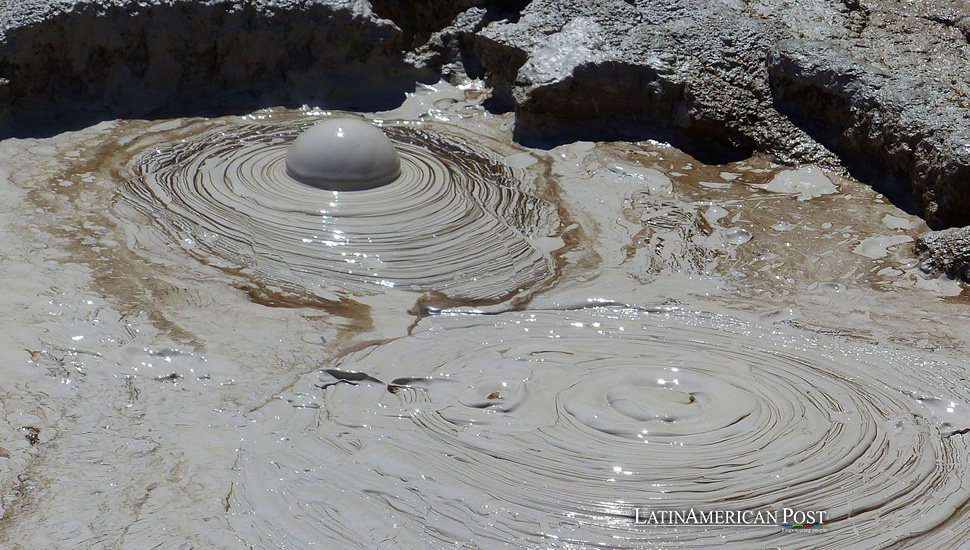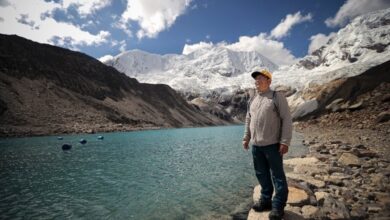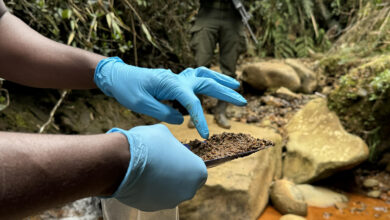Trinidad’s New Mud Volcanoes Are a Rising Geologic Concern

Newly discovered mud volcanoes in Trinidad’s east prompt evacuation plans and scientific scrutiny, marking a significant geological development on the Caribbean island.
Unveiling Trinidad’s Geological Enigma
In the verdant landscapes of Trinidad, a recent geological phenomenon has stirred curiosity and concern. A series of small mud volcanoes, newly emerged in the eastern Caribbean island, have prompted local authorities to devise evacuation strategies. This development marks a significant addition to Trinidad’s known geological features, with implications for residents and the scientific community.
Last week, the tranquil atmosphere of the Cascadoux Trace area was disrupted by the sudden eruption of a small mud volcano. Fortunately, this event did not result in any injuries or significant damage, but it led to the precautionary evacuation of several families. The incident has heightened awareness of the potential risks associated with these geological formations.
Scientific Interest and Concern
Subsequent investigations have revealed at least five other new mud volcano craters in the vicinity since last week’s eruption. These discoveries have sparked scientific interest and concern among the local populace. Raymond Cozier, the chairman of the Mayaro/Rio Claro Regional Corporation, highlighted the collaborative efforts underway to study these mud volcanoes. Experts from the University of the West Indies Seismic Research Center are at the forefront, analyzing the current activity of the mud volcanoes, which, while bubbling, have become dormant.
Trinidad’s association with mud volcanoes is a phenomenon that has been around for a while. The island has long been recognized for its mud volcanoes, some of which have become popular tourist attractions. These natural wonders are formed by expelling gases and liquids from deep underground, creating cone-shaped mounds as the mud dries. Their existence is a testament to Trinidad’s dynamic geological landscape, shaped by the island’s position near tectonic plate boundaries.
A New Dimension to Trinidad’s Profile
The discovery of nearly two dozen mud volcanoes in the southern region of Trinidad, close to oil and gas reserves, adds a new dimension to the nation’s geological profile. However, this concentration of mud volcanoes is unique to Trinidad, with none identified on its sister island, Tobago. This geographical disparity underscores the twin-island nation’s complex and diverse geological characteristics.
One of Trinidad’s most notorious mud volcanoes, Piparo, erupted in 1997, leading to the evacuation of hundreds of residents. The event remains etched in the memory of locals and serves as a cautionary tale of the potential hazards these seemingly benign geological formations pose. The Piparo eruption was a wake-up call, highlighting the need for continuous monitoring and preparedness in the face of such natural occurrences.
Ensuring Public Safety
The current situation has prompted officials to engage with residents in the eastern part of the island, ensuring they are informed and prepared for any eventualities. This proactive approach is crucial, given the unpredictability of mud volcano activity. The authorities’ readiness to implement evacuation plans, if necessary, demonstrates a commitment to public safety and a recognition of the seriousness of the situation.
Beyond the immediate safety concern, discovering these new mud volcanoes presents a valuable opportunity for scientific research. Geologists and seismologists are keen to study these formations to better understand the island’s underground activities. Research could provide insights into these eruptions’ mechanisms and help predict future occurrences. It also holds potential implications for understanding the relationship between geological activity and the island’s rich oil and gas reserves.
Beauty and Risks Intertwined
For the residents of Trinidad, the emergence of these mud volcanoes is a reminder of the island’s ever-changing landscape. It’s a phenomenon that intertwines elements of wonder and caution, reflecting the dynamic interplay between the island’s natural beauty and its inherent geological risks.
Also read: Heavy Rains in Peru Leave Over 130 Displaced, Thousands Affected
As the scientific community delves deeper into this phenomenon, the people of Trinidad watch with bated breath, hopeful that these natural spectacles remain spectacular to behold but harmless in their existence. The mud volcanoes of Trinidad, both old and new, stand as symbols of the island’s vibrant geology, inviting admiration while demanding respect and vigilance.




